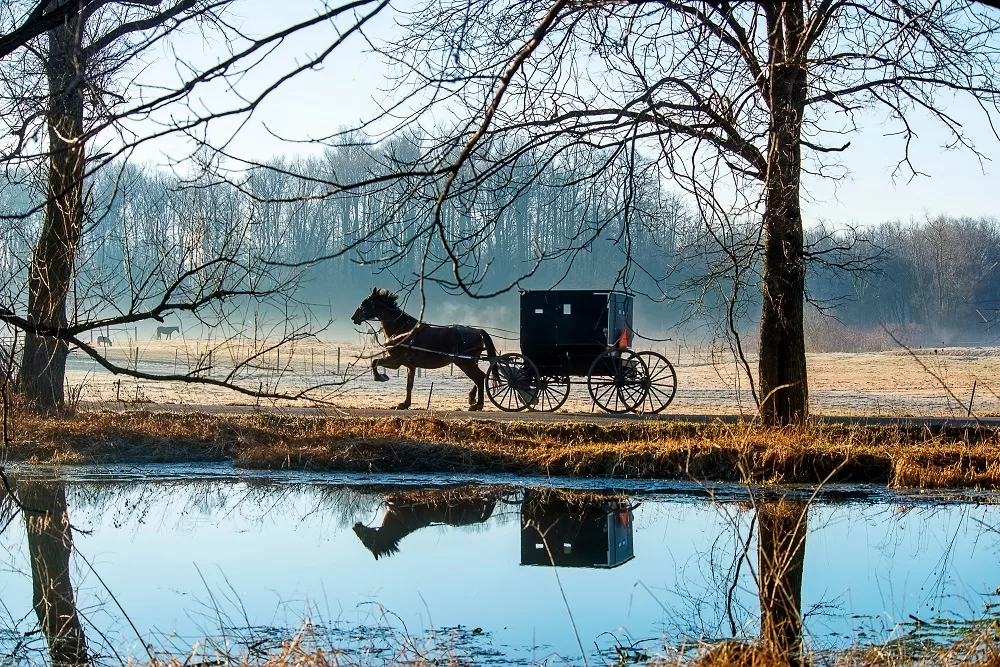Strong climatic signals for this winter, associated with what could become a “Super El Niño,” show Indiana predicted to be warmer and drier than normal.
The Climate Prediction Center (CPC) places the entire state into this designation, with the exception of the southern edges of counties along the Ohio River, where the probability of drier than average conditions weakens to equal chances of above-normal, normal, or below-normal precipitation. The mitigating factor for this forecast would be instances of interference from other oscillations, namely the Arctic or Pacific North American.
The CPC forecast largely imitates the traditional El Niño signature for wintertime, wherein the southeastern US has high confidence of a wetter signature at 60-70% – just a little less than Zach Edey’s current season free throw success percentage, or a little higher than his field goal percentage, as of late November. Meanwhile, the drier signature for the northern US has weaker confidence, with most of Indiana in the 33-40% chance of a drier signature and a predicted anomaly for the three months of just under 0.2 inches drier than normal. The confidence for a drier northeastern Indiana is greater, at 40-50% and an anomaly of more than half an inch drier.
Indiana State Climatologist Beth Hall cautions, however, that drier than normal does not necessarily mean less snow. “Snow-liquid relationships vary with each snow event,” she says. “Warmer (yet below freezing) temperatures can actually cause more snow than very cold temperatures.” For temperatures, the whole state is in the 40-50% chance of above-average temperatures compared to the 1991-2020 average. The predicted anomaly is a little less than 1 degree Fahrenheit above average.
The strength of the El Niño pattern observed in the equatorial Pacific has an effect on how warm and dry we may become or stay. The current forecast is for a “moderate to strong” El Niño throughout the winter. A few months ago, certain models were calling for a super El Niño, or sea surface temperatures in the Pacific to be greater than 2 degrees Celsius higher than average over the course of the winter. Those forecasts have generally tapered off; sea surface temperatures have remained above average but more moderate in their increases over time.
If the El Niño continues to strengthen, the signal for warm and dry will strengthen. Hall also notes that while the last six strong or even moderate El Niño events can be averaged into warmer and drier than normal conditions, the most recent of these events (2015/2016 [strong] and 2006/2007 [moderate] ended up being wetter than average. “We need to keep in mind that the climate is changing at a rapid rate, so it is difficult to assume this winter will be similar to those back in the 1950s through 1980s,” Hall says.
Other oscillations that are quicker to shift back and forth from positive to negative exist, and they definitely can affect Indiana weather over the course of a few days to a couple of weeks. The polar vortex that flooded cold air into much of the eastern US immediately prior to Christmas in 2022 was an example of one such oscillation.
The relatively new term “polar vortex” is an offshoot of the artic oscillation, an oscillation in the Arctic that generally holds a tight circular oscillation near the Arctic. When the oscillation goes negative, the jet stream begins to shift across a greater area north and south, usually bringing colder air into our region and warmer air up into the Pacific, as evidenced by Alaska usually having warmer temperatures than Indiana when the coldest air is evident in our state. Because these oscillations affect jet streams, they influence both temperature and precipitation, making predicted dry areas very wet for a brief time, and warm winters very cold – again, for a short duration.
Sources: Purdue Extension, Indiana State Climate Office.

